
The BEST 8 Inch Cake Recipe
Three layers of super soft and fluffy 8 inch vanilla cakes, frosted with a whipped vanilla buttercream. This cake and frosting can be adapted into any other flavor!
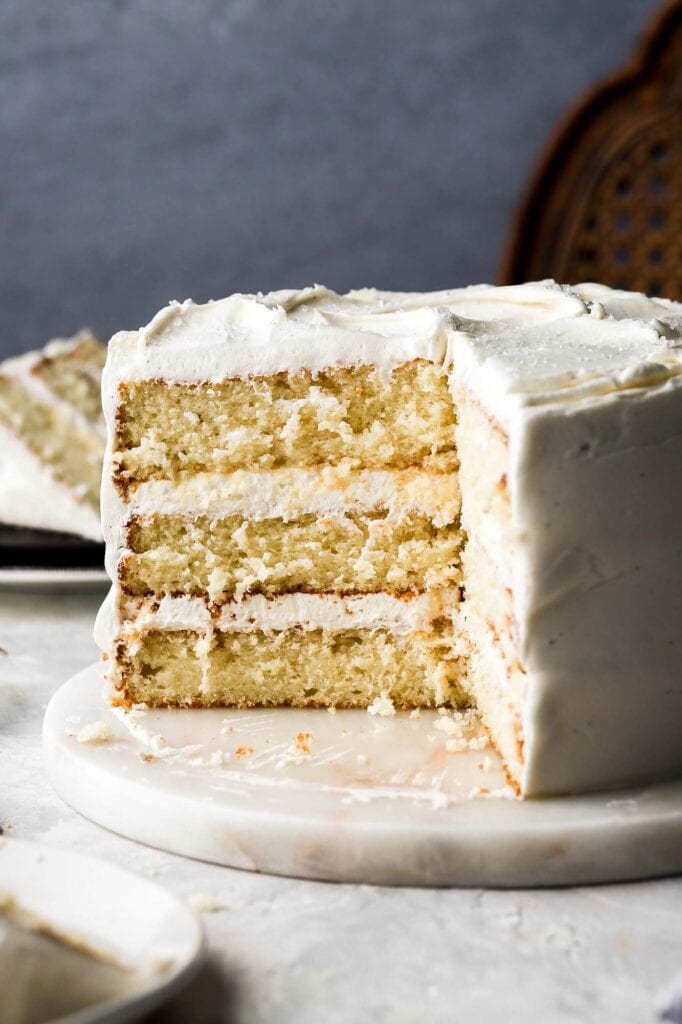
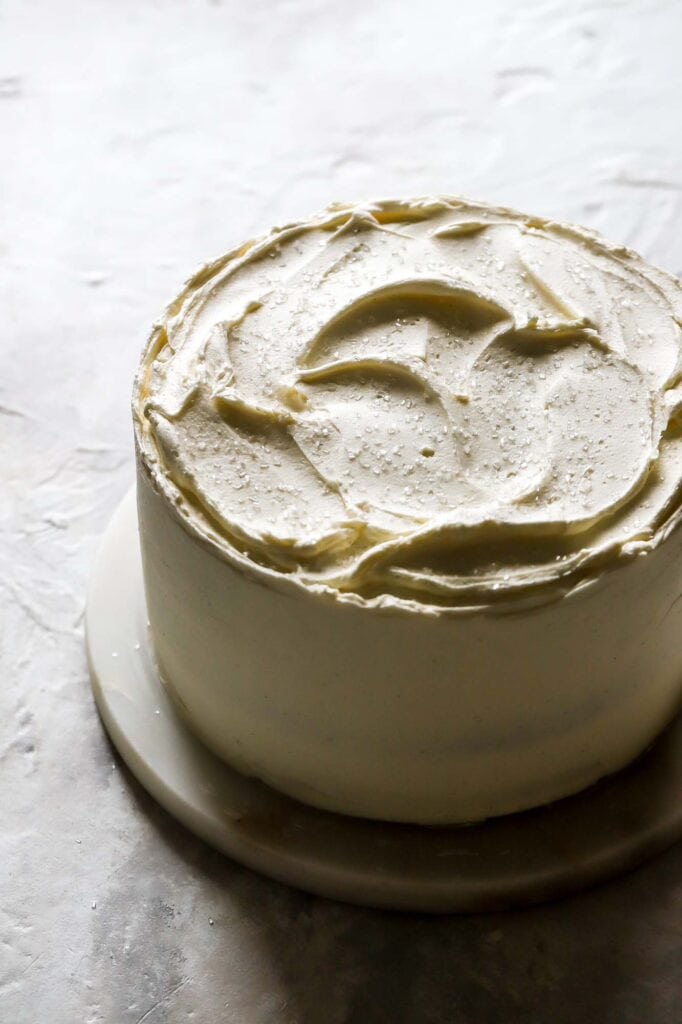
The most popular recipe on Baran Bakery is my 6 Inch Vanilla Cake Recipe. Unfortunately not everyone has 6-inch pans or sometimes it’s just too small so I always get asked if it can be baked into different size pans, especially 8-inch. It certainly can be but you’ll only get two layers and it will be a fairly short cake compared to the one pictured.
So, for all you lovebugs who love my vanilla cake recipe, I TURNED IT INTO A THREE LAYER 8 INCH CAKE!
I did not have to yell that at you but honestly I’m so excited about it because it really is my favorite cake and *almost* forgot how good plain vanilla cake was. I also tweaked my whipped vanilla bean American buttercream recipe to fully frost the 8 inch size.
I’ve adapted my 6 inch version into so many different flavors but the same methods can be applied to the 8 inch, like browning the butter, swirling in the Nutella, folding in biscoff cookies, adding chocolate chips, using brown sugar and cinnamon, etc.
I also used this recipe to make my white chocolate raspberry cake,
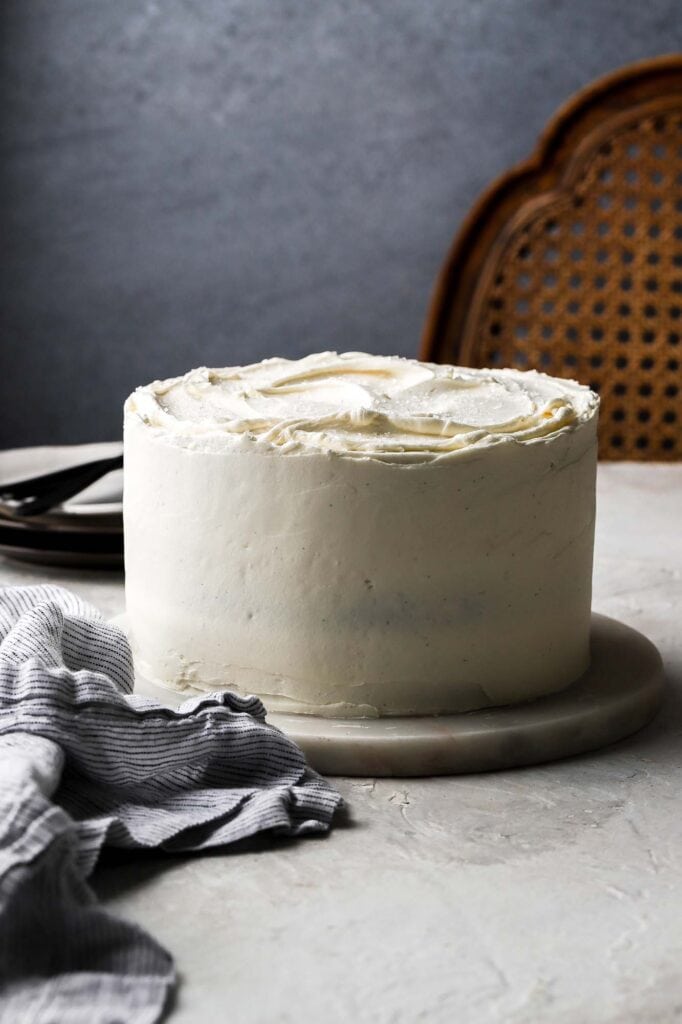
Why I love this 8-inch vanilla cake recipe
Flavor & Texture: To me, the perfect cake has a lovely balanced flavor of butter, sugar, vanilla, milk, eggs and flour. It also has a fluffy, moist and tender texture without being too flimsy, crumbly, dry or dense.
Simplicity: No one wants to make the BEST cake recipe if the ingredient list is too long or inaccessible. I think most people have these ingredients on hand and it’s fairly simple to make…in my opinion, lol.
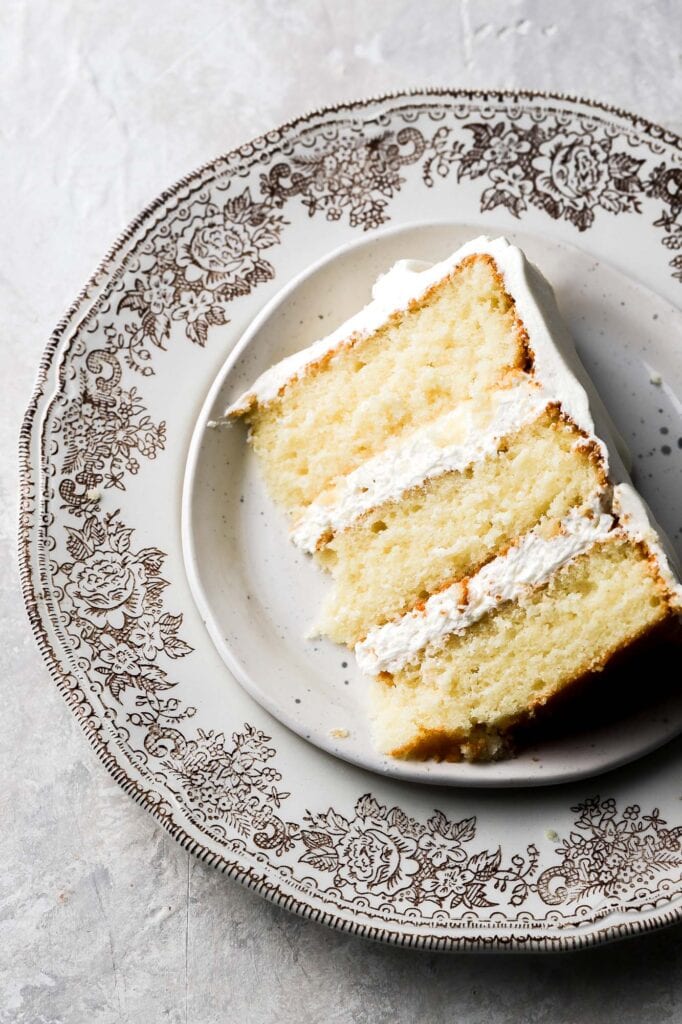
How to make an 8-inch cake
I really like to keep my recipes as simple as I can without leaving out anything that might help you. The full instructions are in the recipe card but we’ll run through some best practices for cakes in general and the ingredient list.
The main steps are creaming the butter and sugar together, adding in the oil and eggs, beating between each addition and then alternating adding in the dry ingredients with the milk and sour cream.
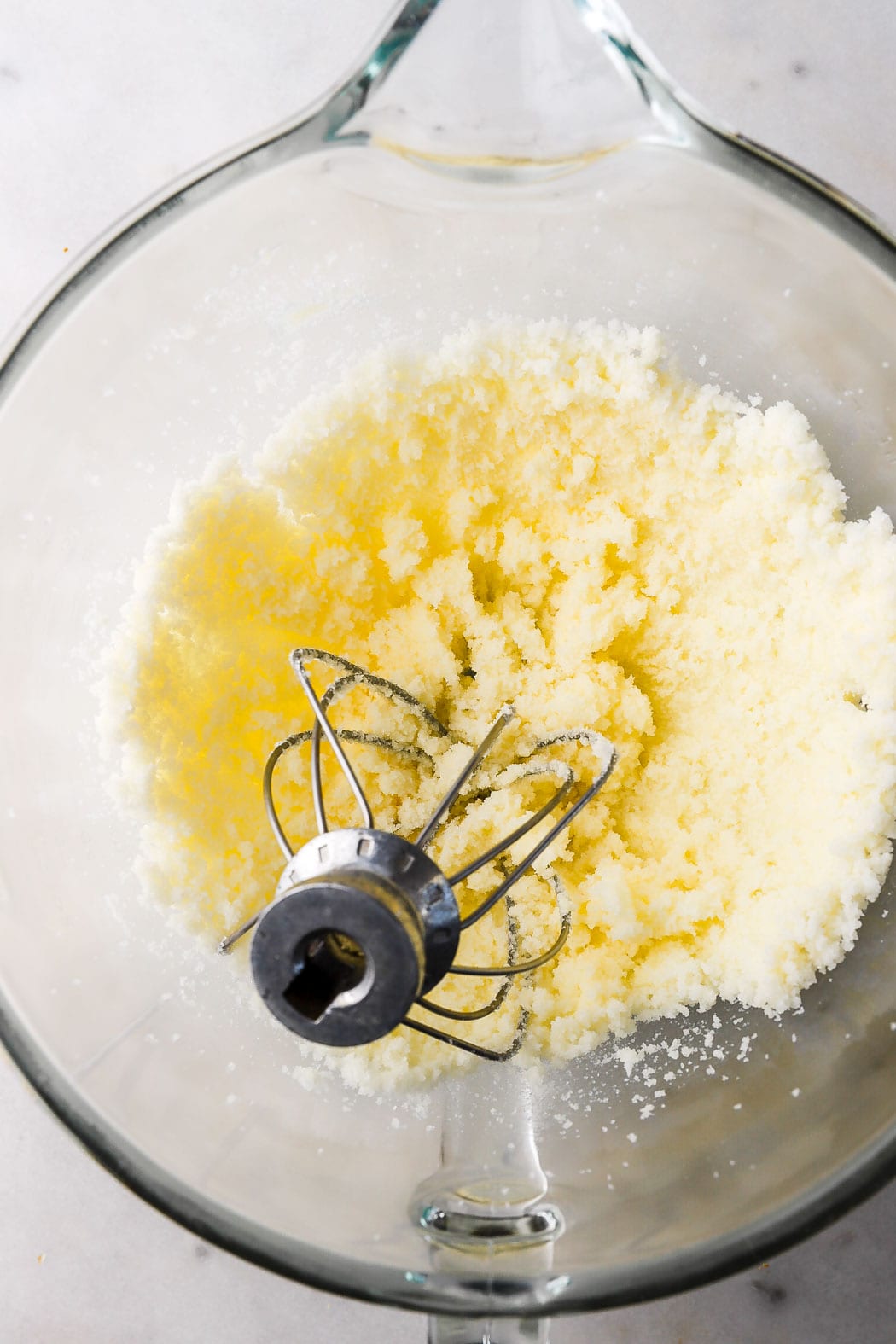
Ingredients:
- All-purpose Flour: Cake flour is known to produce better results in cakes… better is an opinion, lol. Personally, I don’t care for the taste of cake flour. The texture may be more tender, but it’s not worth someone going out to buy cake flour just to make a cake. This recipe was developed specifically to use all-purpose flour since that’s what most people have at home.
- I also HIGHLY recommend using a digital scale, as you will almost always overmeasure the flour.
- Fat: I use butter and oil in almost all my cake recipes because I like the flavor from the butter and I like the texture produced by the combination of both fats. I find that oil alone is sometimes too spongy and not quite as pleasant in a plain vanilla cake. Whereas using all butter usually results in a cake that’s a bit more stiff.
- Whole Eggs: you simply can’t argue against the flavor and richness that egg yolks bring to the table. I use egg whites when I specifically want my cakes to be white and not yellow but this cake was developed for optimal flavor and texture so whole eggs all the way!
- Sugar: I mean do we need to talk about this one? YES WE DO, because some people think it’s ok to remove ¼-½ of the sugar from a recipe because “they don’t want it so sweet”…I get it. But the truth is homemade cakes are nowhere near as sweet as store bought ones (at least mine aren’t).
- If you want to remove sugar, use a European based buttercream, like Swiss or French, instead of the American
- If you do use my Swiss or French (or any other one from my cookbook, Frosted, you’ll want to multiply the recipe by at least 1.5x-2x depending on how much you want to decorate.
- Sugar is not only there for sweetness. It caramelizes to produce flavor and color. It also creates tenderness and locks in moisture.
- Liquid: I was a firm believer in buttermilk before I did all this testing. Now I am a firm believer in sour cream. The difference in texture and flavor was mind blowing from the very first test.
- If you really don’t have access to sour cream you can replace it with equal amounts of greek yogurt.

Frequently Asked Questions
Why do my ingredients need to be at room temperature?
The temperature of the ingredients ensures that the right amount of air is incorporated into your cake and that the batter emulsifies properly. If your batter ever looks split/curdled when you add the eggs, it’s most likely either the temperature of your ingredients or the fat to liquid ratio is off.
I usually pull the butter and eggs out first. Put the eggs in some hot water and slice the butter so it warms up quicker. Get the rest of my ingredients together and measure. Microwave the milk for 10-20 seconds so it’s not cold and use cold sour cream because warm sour cream sounds gross, lol.

How to prevent the cakes from sticking to the pan?
Honestly I rarely encounter this problem. I typically just use a baking spray made with flour to grease my cake pans. I feel like that’s not as common as greasing with plain butter or flour but it works for me and it’s so much easier. If you’re really nervous you can use parchment paper to line the bottom of the pans as well.
When are my cakes done baking?
This is important because a good cake can become a dry cake in a matter of minutes. A toothpick inserted in the center that comes out clean is also a common test to check for doneness but this can also easily lead to an overbaked cake. .
If your cake pans are greased properly, the cake should release itself from the edge of the pan once it’s fully baked. Another way to know is that as soon as the top of the cake no longer looks wet, gently press on the center of it and if it springs back, it’s done. If your fingerprint stays pressed down then bake it for another 1-2 minutes and try again.
Can I make this 8-inch cake in a different size pan?
Mehhh…if I’m being honest, you don’t need to. If you want a 6-inch cake, then make that version but if you want a 9-inch cake, you can make this one (bake a couple minutes less if using three pans or a few minutes more if using two pans) but I’d prefer to just double the recipe for the 6-inch one to make three 9-inch layers. If you want a quarter sheet cake (9×13), I recommend the original 6-inch version for that as well.
I also have a 10 inch version and a 4 inch version of this cake. They’re all tweaked just slightly but almost unnoticeable.

Can I turn this cake into cupcakes?
This cake recipe is not my favorite for cupcakes. It was developed to dome less and created a flatter top so the cupcakes would be kind of sad looking. You would also probably get an awkward amount of cupcakes like 30-35 cupcakes.
BUT, here’s my small batch vanilla cupcake recipe and stay tuned for my basic full-batch vanilla cupcake recipe!
How much frosting do I need for a three layer 8-inch cake
I prefer not to decorate my cakes heavily so I find that a frosting that uses 1 ½ cups of butter is sufficient. If you’re looking to decorate as well, I would recommend a frosting that uses at least 2 cups of butter.
For example, the recipe included with vanilla American buttercream uses 1 ½ cups of butter but the recipe for Swiss meringue buttercream uses 1 cup of butter. To adjust them to fit this cake, multiply them by 1.5x the recipe. So for a Swiss meringue buttercream, instead of 4 egg whites and 1 cup of sugar, use 6 egg whites with 1 ½ cups of sugar and 1 ½ cups of butter.
If you haven’t already, make sure to check out my cookbook Frosted. It’s about all the different types of frosting and it has 60 recipes to use the frostings for!
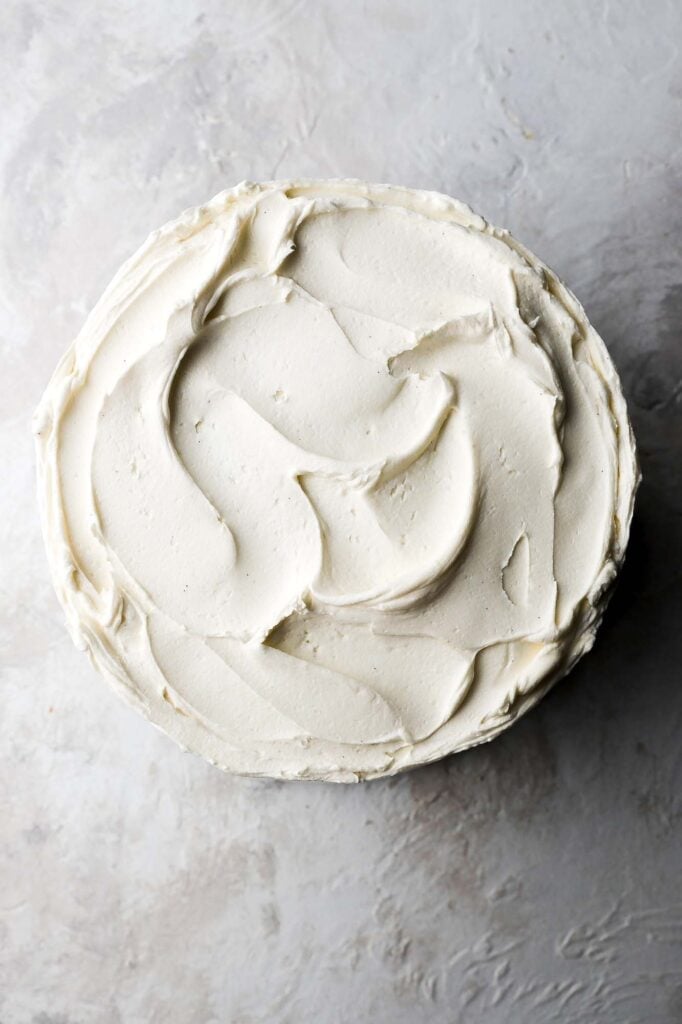
How to store cake
Storing unfrosted cake layers (make ahead)
You can make the cake layers ahead of time. For best results, allow the cake layers to cool almost to room temperature. When they’re still just slightly warm, wrap them in plastic wrap and leave them on the counter overnight.
If you’re making them more than one day in advance, you’ll want to freeze them. Place the plastic wrapped layers in a freezer bag, removing the excess air, and freeze on a flat surface.
You can remove the cakes from the freezer and frost right away or you can remove them a few hours earlier and bring them back to room temperature. If you’re frosting them frozen, make sure to let the cake rest so it thaws before serving.

How to store the finished cake
If the cake is fully frosted and unsliced, you can leave it on the counter overnight (unless it feels soft and unstable, then refrigerate it).
If the cake is partially sliced, cover any cut sections with plastic wrap or a cake dome. Place all the cut slices in an airtight container. It can stay at room temperature for a day or refrigerated for up to a week.
How to freeze the cake
If the cake is sliced, place the slices in an airtight container. You can also individually wrap each slice in plastic wrap if you want to remove one at a time. Place the container in a freezer bag and squeeze out all the excess air. You can store them in the freezer for up to 2 months.
You can also freeze the cake whole. To do this, refrigerate the cake until the frosting is firm, a couple of hours. Then wrap the whole cake in plastic wrap, twice and freeze for up to two months.
Let the cake thaw in the fridge over night. Then remove the plastic wrap and let it thaw on the counter until serving. Keep in mind, the cake is never as good as fresh.
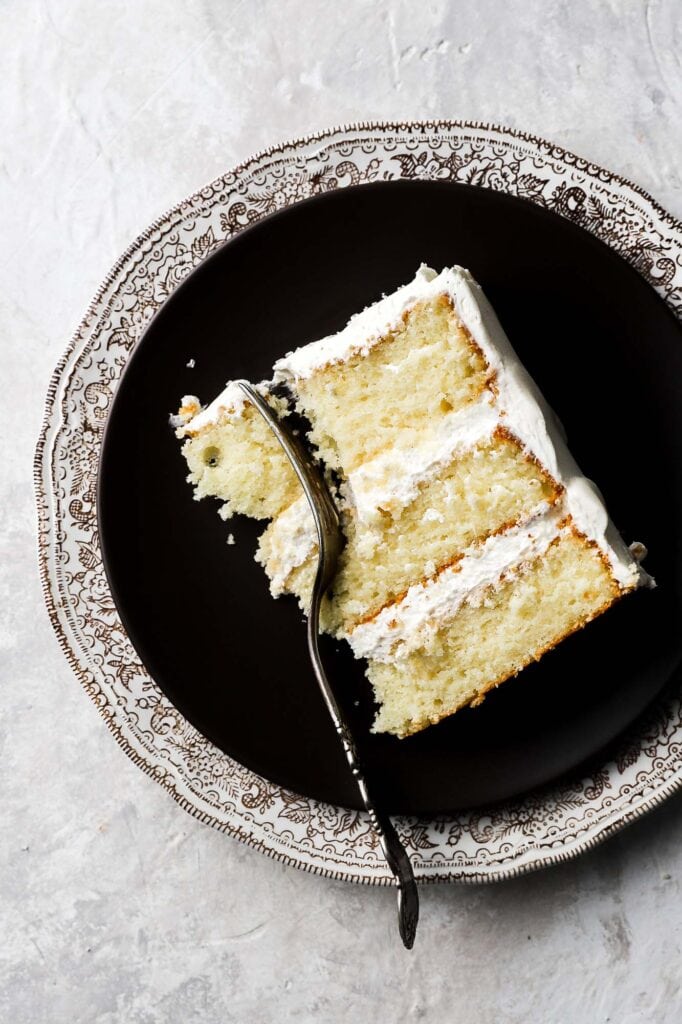
Thanks so much for reading, I really hope you guys enjoy. this cake as much as we did. If you make this 8-inch cake make sure to tag me @baranbakery on instagram! As always, have a blessed day and happy baking!
Love, B

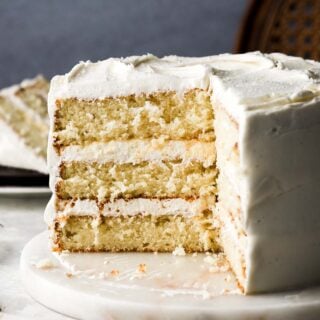
I LOVE the 6 inch recipe and it’s my GO TO for all sponge bakes. But I’d love this recipe in a 8 inch for two tins not three? I tried dividing this mixture between two 8 inch tins and the mixture was so big, and heavy. Have you any advice on how this recipe could be adapted to two 8 inch tins please? Sorry I know so many people ask about the tin sizes 🤣😭 I just love it so much and want it to work in 2 tins for 8 inch as three layers means more buttercream and sometimes too big !
Hi Katherine! I actually would just bake the 6 inch cake recipe in two 8 inch pans if you want just two layers!
Ah I will try it and see! Thank you 🙂
Love this recipe, a winner! Can I use this for cupcakes?
Love this recipe, everyone I baked it for were super pleased. Can I use this recipe for a bigger batch cupcakes?
So glad you liked it, thank you for the review!
I don’t love it for cupcakes just cuz sometimes they sink when they cool but if you do make it, it should make about 35ish cupcakes.
I would recommend my vanilla cupcake recipe instead though, you can make a double or triple batch of those if you need a bigger quantity.
https://baranbakery.com/vanilla-cupcakes-with-vanilla-buttercream/
Everytime i do this same recipe my cake doesn’t grow i want my 8 inch cakes to be tall! How can i make it more tall?
I will make the raspberry jam tomorrow I hope it won’t make the swiss meringue buttercream runny indie the layers. Please advice. I have baked the cake and frost them. tomirrow
I baked this amazing recipe three times already. I would love to add strawberry or raspberry jam. I can’t find your strawberry jam recipe. Please advise
Thank you Merriam, I’m glad you enjoy the cake 🙂
I have both used in other recipes:
https://baranbakery.com/strawberry-turnovers-with-phyllo-dough/
https://baranbakery.com/chocolate-raspberry-cake/
https://baranbakery.com/rhubarb-vanilla-cake/